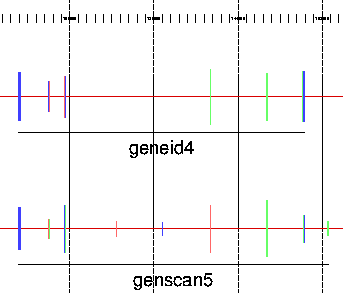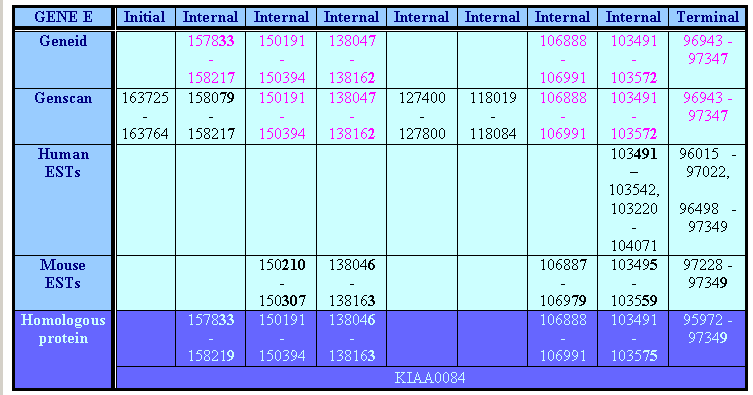
It is a reverse strand gene predicted by the two programs. The genscan predicts an initial exon, 7 internal exons and a terminal exon, a part from the promoter and the polyA which we will not consider. The geneid program predicts no initial exon but 5 internal and one terminal. We find human and mouse ESTs reinforcing our data and with blastp with the gene predicted with the genscan we obtain 100% of homology with the KIAA0084 protein (aminoacids 148 to 578), matching all the predicted aminoacids. With the gene from the geneid we obtain similarity with the same protein with a 82%, matching 355 of the 412 predicted aminoacids.
- Initial: It is predicted by genscan but not reinforced by any further information. So, we consider that it is not correct and that the initial exon is not contained in our contig.
- Internal:
- Predicted by genscan and geneid. The geneid one is larger and completely reiforced by the homologous protein, so we take this one.
- Predicted the same by genscan and geneid and the homologous protein, and reinforced by a mouse EST.
- Predicted the same by genscan and geneid and the homologous protein, and reinforced by a mouse EST.
- Predicted by genscan but not reinforced by any further information.
- Predicted by genscan but not reinforced by any further information.
- Predicted the same by genscan and geneid and the homologous protein, and reinforced by a mouse EST.
- Predicted the same by genscan and geneid and the homologous protein, and reinforced by two human ESTS and a mouse EST.
- Terminal: Predicted the same by genscan and geneid and the homologous protein, and reinforced by two human ESTS and a mouse EST.


